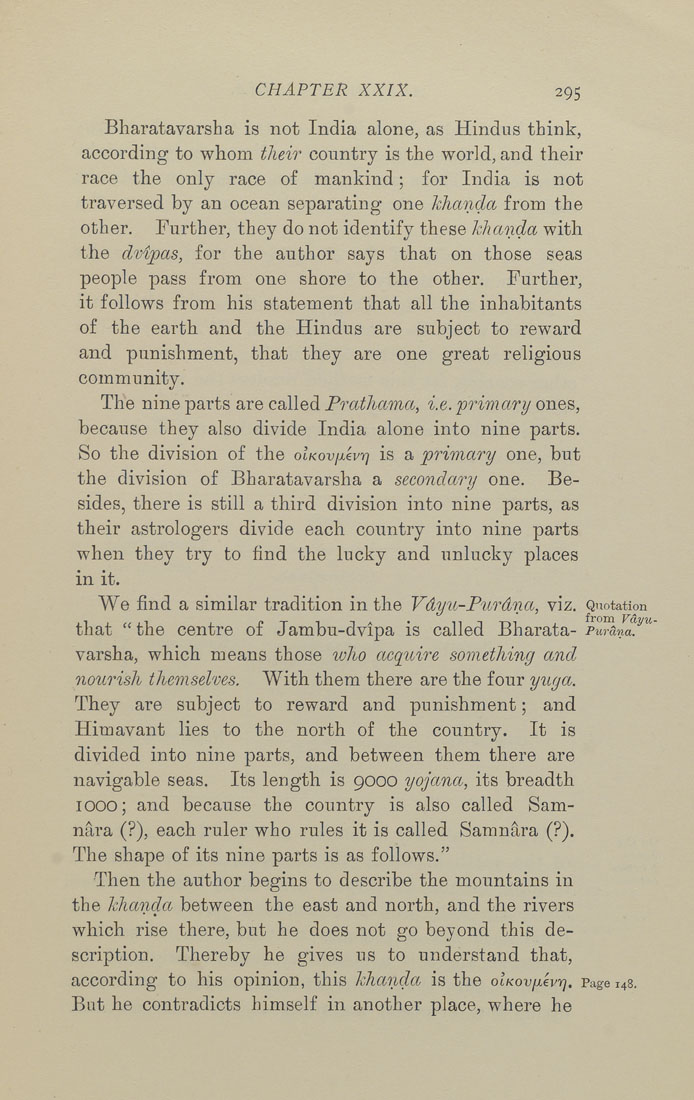Bīrūnī, Muḥammad ibn Aḥmad, Alberuni's India (v. 1)
(London : Kegan Paul, Trench, Trübner & Co., 1910.)
|
||
|
|
|
|
| Page 295 |

CHAPTER XXIX. 295 Bharatavarsha is not India alone, as Hindus think, according to whom their country is the world, and their race the only race of mankind; for India is not traversed by an ocean separating one khanda from the other. Further, they do not identify these khanda with the dvipas, for the author says that on those seas people pass from one shore to the other. Further, it follows from his statement that all the inhabitants of the earth and the Hindus are subject to reward and punishment, that they are one great religious community. The nine parts are called Brathama, i.c. primary ones, because they also divide India alone into nine parts. So the division of the oiKovjxkvr] is a primary one, but the division of Bharatavarsha a secondary one. Be¬ sides, there is still a third division into nine parts, as their astrologers divide each country into nine parts when they try to find the lucky and unlucky places in it. We find a similar tradition in the Vdy%t-Bttrdna, viz. Quotation that " the centre of Jambu-dvipa is called Bharata- Purdnaf^' varsha, which means those ivho acquire something and nourish themselves. With them there are the four yuga. They are subject to reward and punishment; and Himavant lies to the north of the country. It is divided into nine parts, and between them there are navigable seas. Its length is 9000 yojana, its breadth 1000; and because the country is also called Sam- nara (?), each ruler who rules it is called Samnara (?). The shape of its nine parts is as follows." Then the author begins to describe the mountains in the khancia between the east and north, and the rivers which rise there, but he does not go beyond this de¬ scription. Thereby he gives us to understand that, according to his opinion, this khancia is the olKov\ikvr]. Page 148. But he contradicts himself in another place, where he |
| Page 295 |







